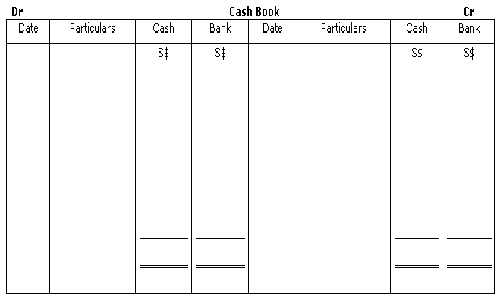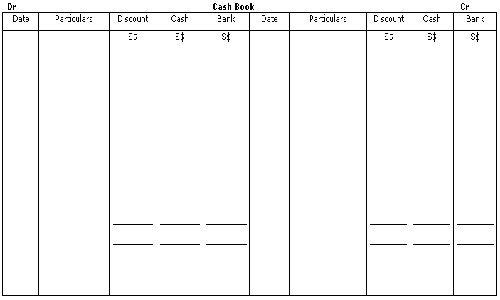

CHAPTER 7: CASH BOOK
![]() Business can settle transactions
either by cash or cheque.
Business can settle transactions
either by cash or cheque.
![]() Since businesses deal with
very large amounts of money every day, there is need to have various techniques
to control the use of cash within the business. One such method is to use
cheques to pay for all transactions. Another method is to bank or deposit
all the cheques & cash received on a daily basis.
Since businesses deal with
very large amounts of money every day, there is need to have various techniques
to control the use of cash within the business. One such method is to use
cheques to pay for all transactions. Another method is to bank or deposit
all the cheques & cash received on a daily basis.
![]() Cheques banked
have to be cleared before the business can use the money for other transactions.
Cheques banked
have to be cleared before the business can use the money for other transactions.
 [Cheque Clearing
is the banking process where one bank checks with another bank that the person
who writes the cheque has enough money in his/her account to pay for the cheque
& the money transferred between the banks]
[Cheque Clearing
is the banking process where one bank checks with another bank that the person
who writes the cheque has enough money in his/her account to pay for the cheque
& the money transferred between the banks]
![]() Since transactions
by cash or cheque are very common, the business can create special journals
that record all the cash or cheques it collects & all the cash or cheque
payment is makes.
Since transactions
by cash or cheque are very common, the business can create special journals
that record all the cash or cheques it collects & all the cash or cheque
payment is makes.
![]() To record all
cash/cheque transactions, business use one special book called Cash
Book.
To record all
cash/cheque transactions, business use one special book called Cash
Book.
![]() Format of a two-column
Cash Book:
Format of a two-column
Cash Book:

![]() Format of a three-column
Cash Book:
Format of a three-column
Cash Book:

![]() The Cash Book
differs from the other journals in the following ways:
The Cash Book
differs from the other journals in the following ways:
![]() Cash discounts are provided
to encourage prompt payments of outstanding amounts while Trade discounts
are provided to encourage bulk purchases (or buying in big quantities).
Cash discounts are provided
to encourage prompt payments of outstanding amounts while Trade discounts
are provided to encourage bulk purchases (or buying in big quantities).
![]() Discount allowed
refers to discounts given to debtors who have purchased goods on credit.
Discount allowed
refers to discounts given to debtors who have purchased goods on credit.
![]() Discount received
refers to discounts given by creditors to the business for goods purchased
on credit.
Discount received
refers to discounts given by creditors to the business for goods purchased
on credit.
![]() Business might
wish to apply for an overdraft facility from its bank. This means that the
bank allows the business to draw more than what it has in its bank account.
Business might
wish to apply for an overdraft facility from its bank. This means that the
bank allows the business to draw more than what it has in its bank account.
Alan Goh Jiang Wee © 2001-2002